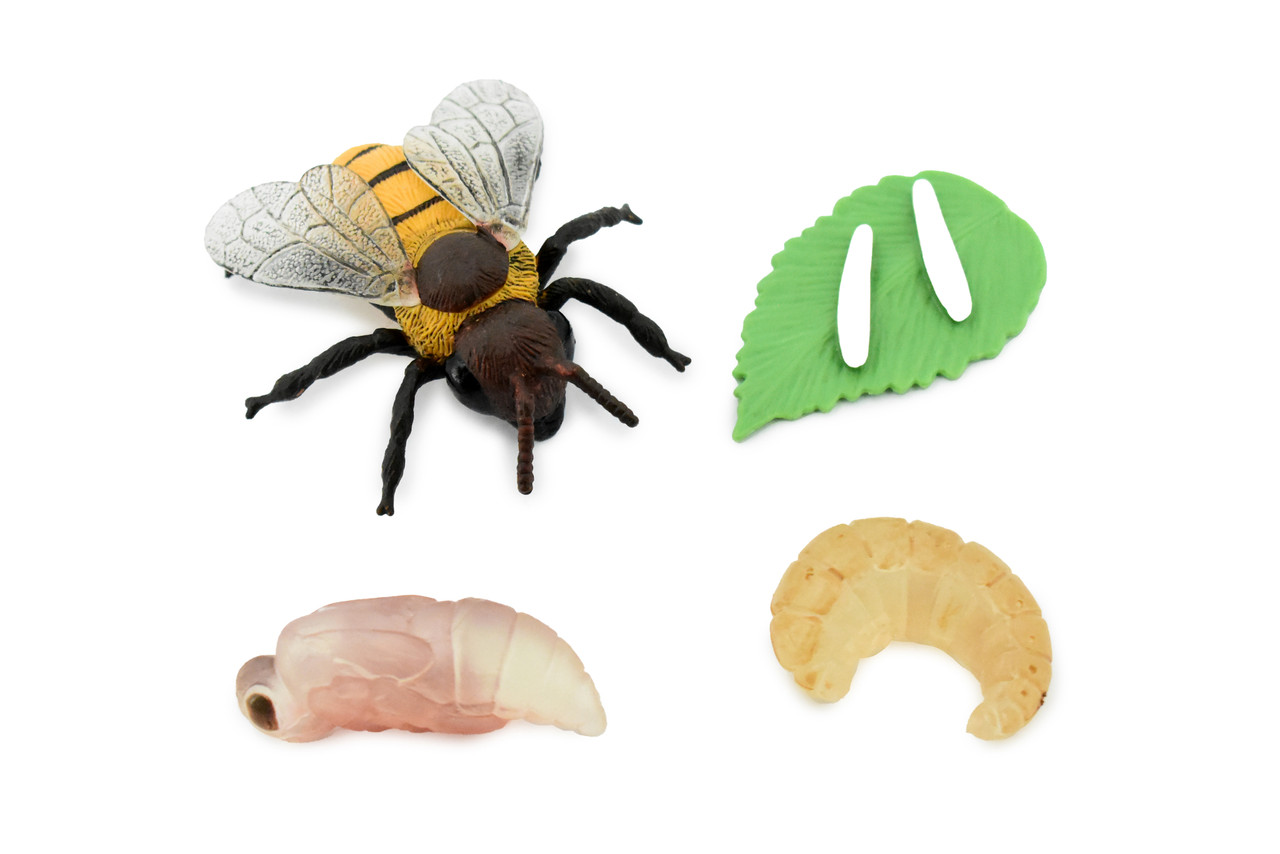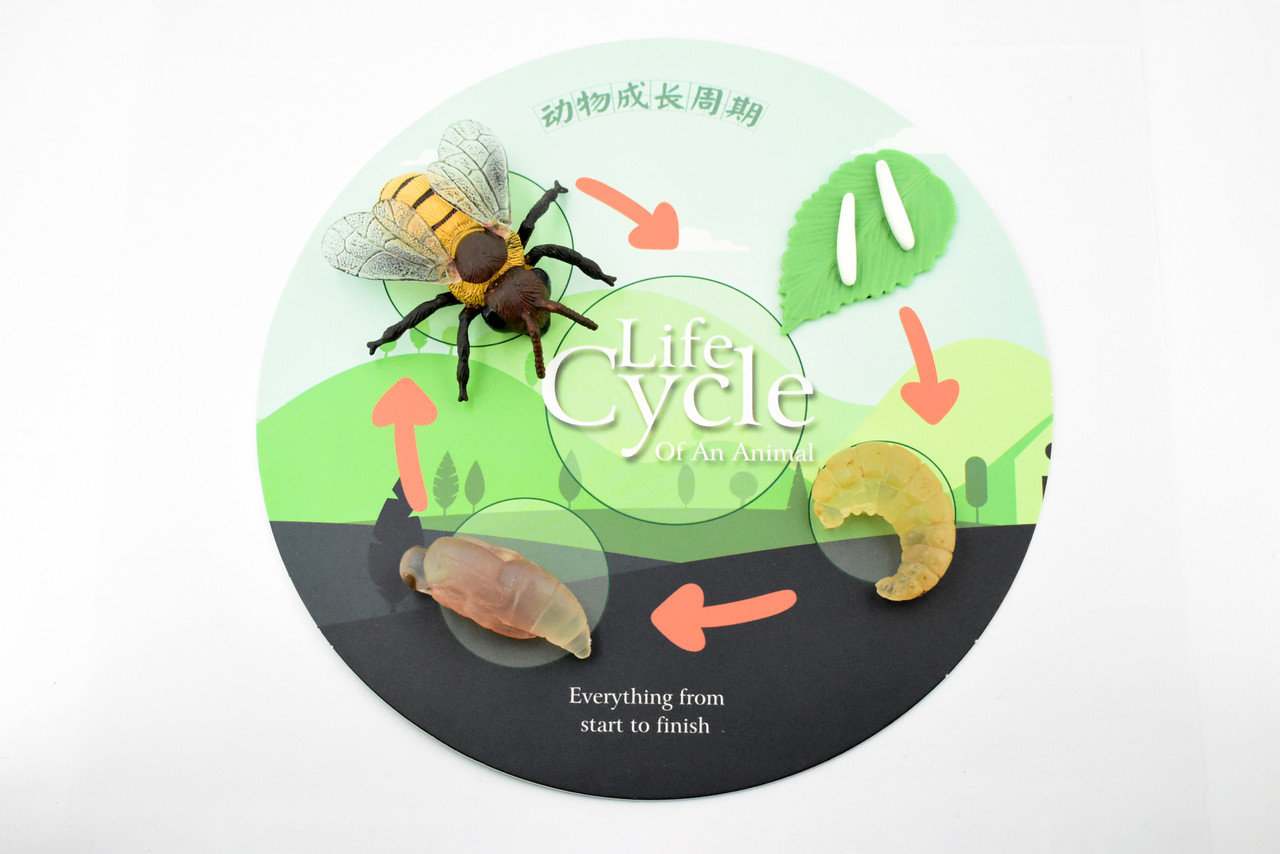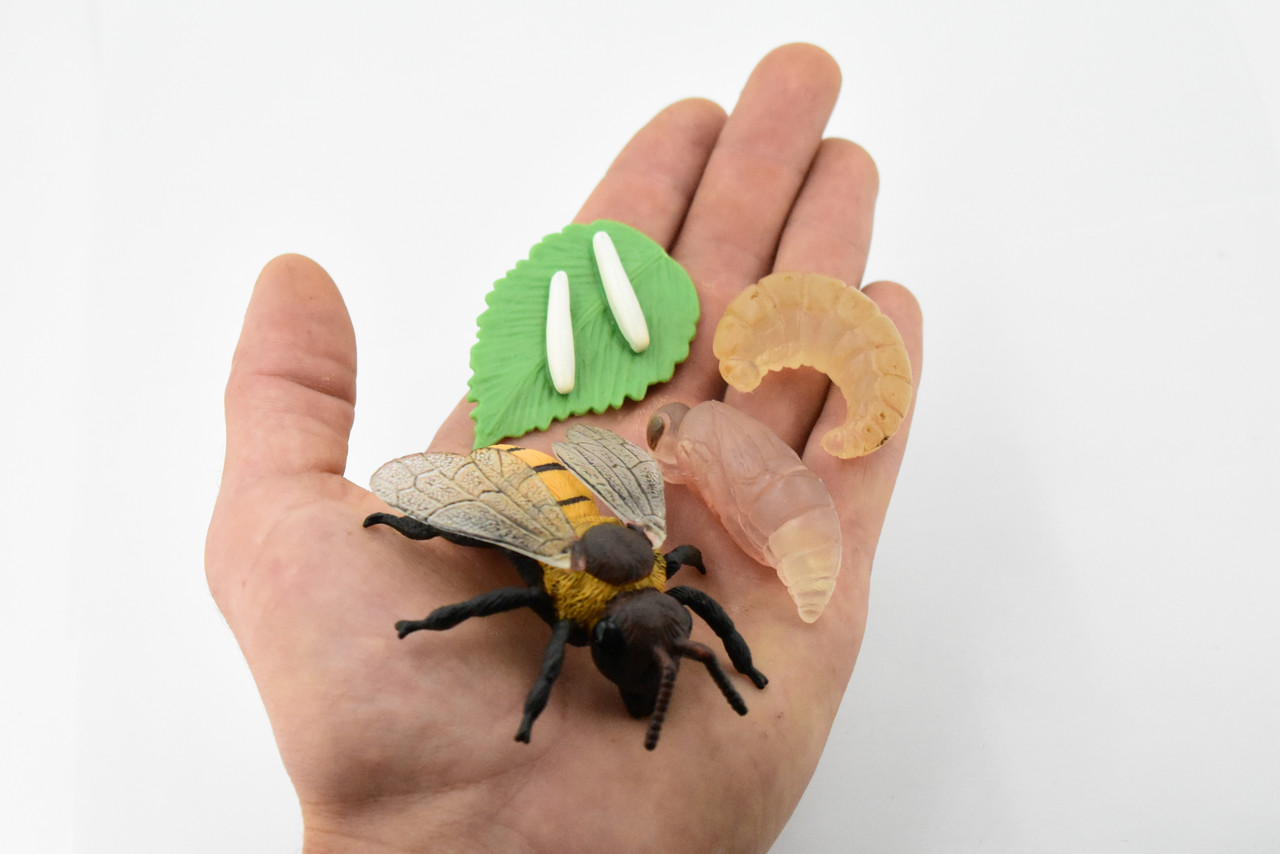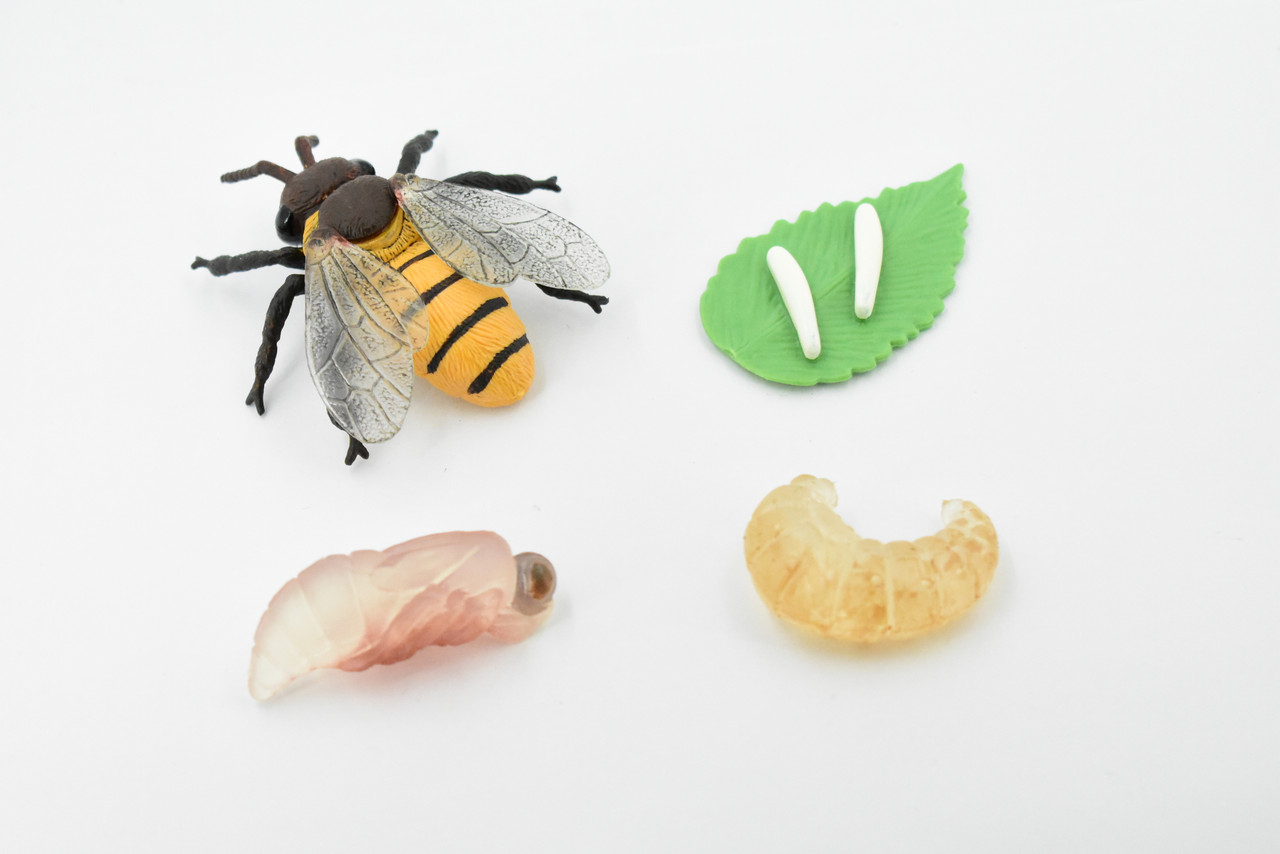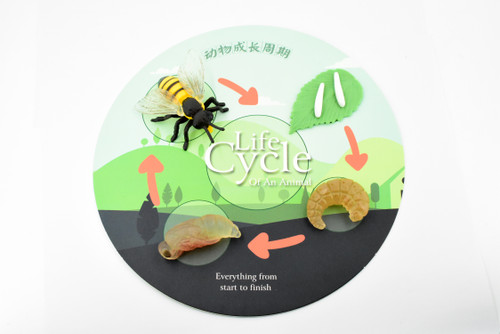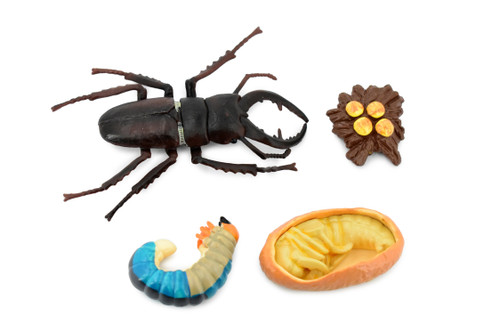Product Description
Bumblebee Bee Life Cycle, 4 Stages, Educational, Museum Quality, Hand Painted, Rubber Insect, Figure, Model, Realistic, Kids, Toys, 3 Inches.
The Bumblebee Bee life cycle, scientifically known as Bombus spp., is a fascinating process that unfolds over several stages, contributing to the essential roles they play in ecosystems worldwide. Starting with the egg, the life cycle of a bumblebee involves a progression through several key stages: egg, larva, pupa, and adult. A bumblebee queen lays eggs, which hatch into larvae, and these larvae are fed by worker bees until they are ready to enter the pupal stage. The pupae transform into adult bees, which will take on various roles within the colony, including workers or potential future queens. The worker bumblebees are responsible for foraging, nursing the larvae, and defending the nest, while the queen’s role is focused on reproduction. The queen bee's life cycle is particularly important in the colony, as she is the sole fertile female capable of laying eggs to produce new generations of bees. As the colony’s life cycle progresses, new queens and male drones are produced towards the end of the season. These new queens will mate and hibernate, beginning the life cycle again the following spring. Bumblebees are known for their important role in pollination, contributing to the health of wild plants, crops, and gardens. Their life cycle is highly synchronized with seasonal changes, making them an integral part of many ecosystems. The stages of development are influenced by environmental factors like temperature, food availability, and habitat conditions. Understanding the bumblebee life cycle is crucial for those interested in conservation efforts, as these bees face threats from habitat loss, pesticides, and climate change. Preserving their populations ensures the continued survival of ecosystems that rely on these remarkable pollinators.
At Collectible Wildlife Gifts, we cater to a diverse clientele, encompassing families, friends, and educators. Our offerings have garnered the trust of professional organizations, including aquariums, zoos, and movie studios, who rely on our quality and educational value.
Our extensive product line features a variety of items, ranging from plush sharks to educational resources showcasing animal growth cycles. Each product is designed not only to bring joy but also to serve as an effective tool for learning. Whether you’re looking to inspire curiosity in a child or enhance an educational curriculum, our products spark interest and foster a love for the natural world.
We believe that learning should be an adventure, and our gifts make exploring nature fun and engaging. With every item, we aim to create memorable experiences that encourage conversations about wildlife and conservation. Our plush toys provide comfort while igniting the imagination, and our educational materials promote understanding and appreciation for various species.
Join us in celebrating the wonders of nature. Whether you’re shopping for a special occasion or seeking educational resources for a classroom, Collectible Wildlife Gifts has something for everyone. Explore our collection today and discover the perfect gift that will delight recipients of all ages while nurturing their love for wildlife and learning. Let us help you make a meaningful impact with gifts that inspire and educate.

